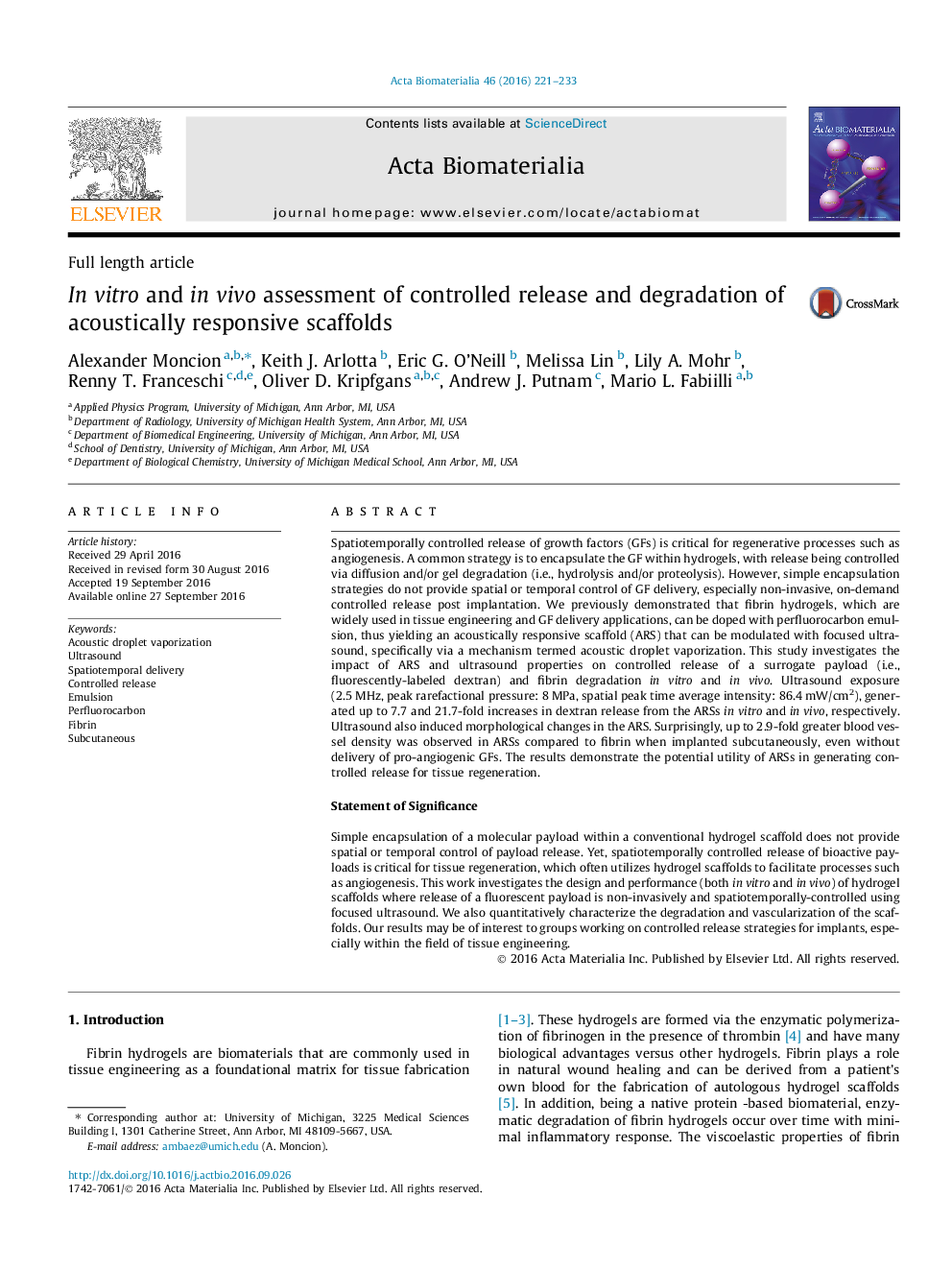| کد مقاله | کد نشریه | سال انتشار | مقاله انگلیسی | نسخه تمام متن |
|---|---|---|---|---|
| 6450159 | 1415940 | 2016 | 13 صفحه PDF | دانلود رایگان |
Spatiotemporally controlled release of growth factors (GFs) is critical for regenerative processes such as angiogenesis. A common strategy is to encapsulate the GF within hydrogels, with release being controlled via diffusion and/or gel degradation (i.e., hydrolysis and/or proteolysis). However, simple encapsulation strategies do not provide spatial or temporal control of GF delivery, especially non-invasive, on-demand controlled release post implantation. We previously demonstrated that fibrin hydrogels, which are widely used in tissue engineering and GF delivery applications, can be doped with perfluorocarbon emulsion, thus yielding an acoustically responsive scaffold (ARS) that can be modulated with focused ultrasound, specifically via a mechanism termed acoustic droplet vaporization. This study investigates the impact of ARS and ultrasound properties on controlled release of a surrogate payload (i.e., fluorescently-labeled dextran) and fibrin degradation in vitro and in vivo. Ultrasound exposure (2.5 MHz, peak rarefactional pressure: 8 MPa, spatial peak time average intensity: 86.4 mW/cm2), generated up to 7.7 and 21.7-fold increases in dextran release from the ARSs in vitro and in vivo, respectively. Ultrasound also induced morphological changes in the ARS. Surprisingly, up to 2.9-fold greater blood vessel density was observed in ARSs compared to fibrin when implanted subcutaneously, even without delivery of pro-angiogenic GFs. The results demonstrate the potential utility of ARSs in generating controlled release for tissue regeneration.Statement of SignificanceSimple encapsulation of a molecular payload within a conventional hydrogel scaffold does not provide spatial or temporal control of payload release. Yet, spatiotemporally controlled release of bioactive payloads is critical for tissue regeneration, which often utilizes hydrogel scaffolds to facilitate processes such as angiogenesis. This work investigates the design and performance (both in vitro and in vivo) of hydrogel scaffolds where release of a fluorescent payload is non-invasively and spatiotemporally-controlled using focused ultrasound. We also quantitatively characterize the degradation and vascularization of the scaffolds. Our results may be of interest to groups working on controlled release strategies for implants, especially within the field of tissue engineering.
Figure optionsDownload high-quality image (273 K)Download as PowerPoint slide
Journal: Acta Biomaterialia - Volume 46, December 2016, Pages 221–233
